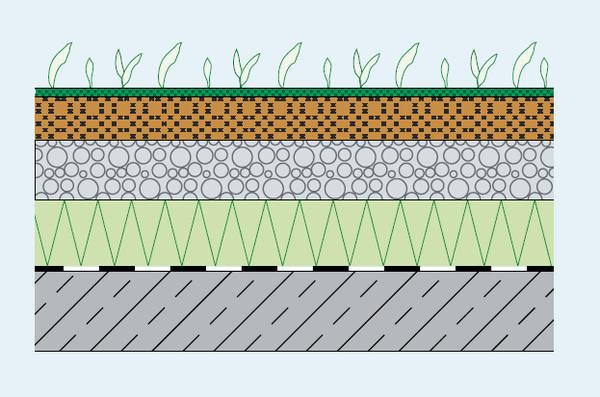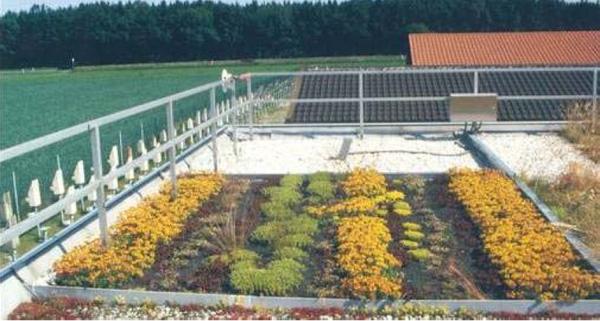Reverse roof insulation is not protected against the effects of weather by additional seals The top layers required to weight the insulation, for instance paving stones, gravel or plant substrates, also store moisture from precipitation, which means that the layer above the insulation is only dry for short dry periods.
This type of installation means that insulating panels that are more diffusion-inhibiting can also accumulate moisture in the long term due to the moisture film caused by the temperature gradient beneath the insulation. This fact was already taken into account in the approval process several years ago by adding a value to the thermal conductivity of the materials. With the help of this value, the resulting thermal conductivity at the midpoint of the construction's expected lifetime can be factored in.
Via hygrothermal simulations, it is now possible to reliably predict even long-term moisture behavior in structures where the conditions are known.
Within the scope of a project funded by the German Center of Competence for Construction (DIBt), a collaboration with the Munich research institute for thermal insulation, FIW, was established. The project was entitled “Estimating moisture values for the thermal conductivity of reverse roof insulation on the basis of object examinations and hygrothermal calculations”. New computational models have been developed for assessing reverse roofs on the basis of outdoor testing and lab measurements.
These models take into account the specific installation conditions of reverse roofs, including the moisture balance of covering layers and the formation of a moisture film under the insulating panels. This enables a more accurate quantification and differentiation of the added values in relation to the material properties, and considers not just the type of material, but also the insulating material's exact installation conditions (layer structure, separating layer, planting, etc.).

